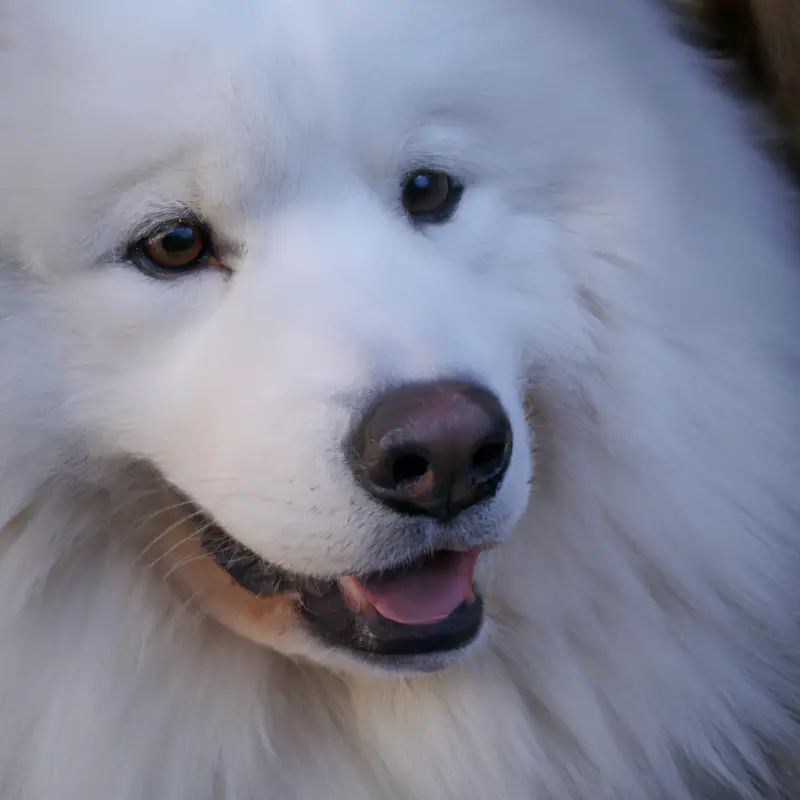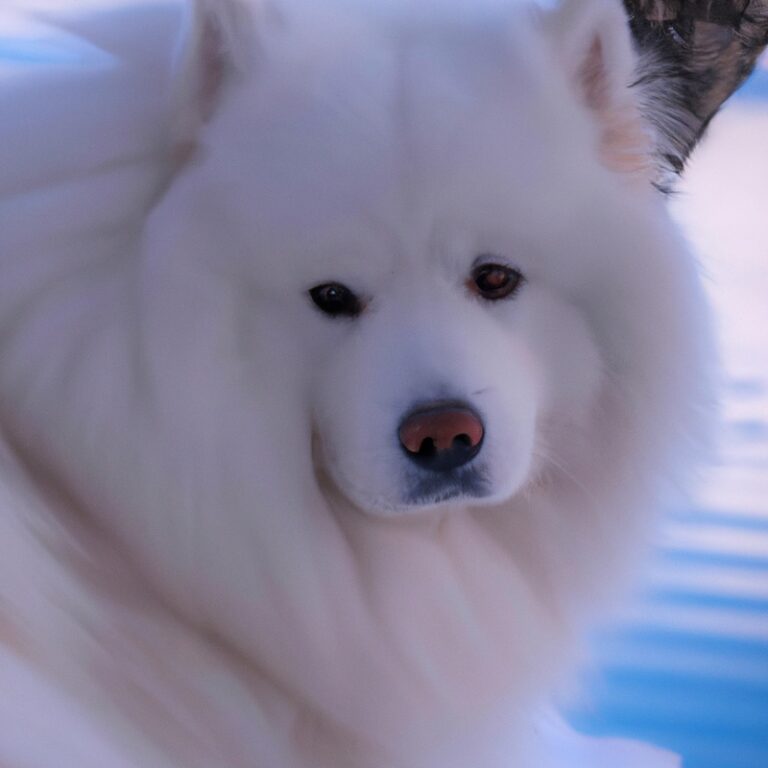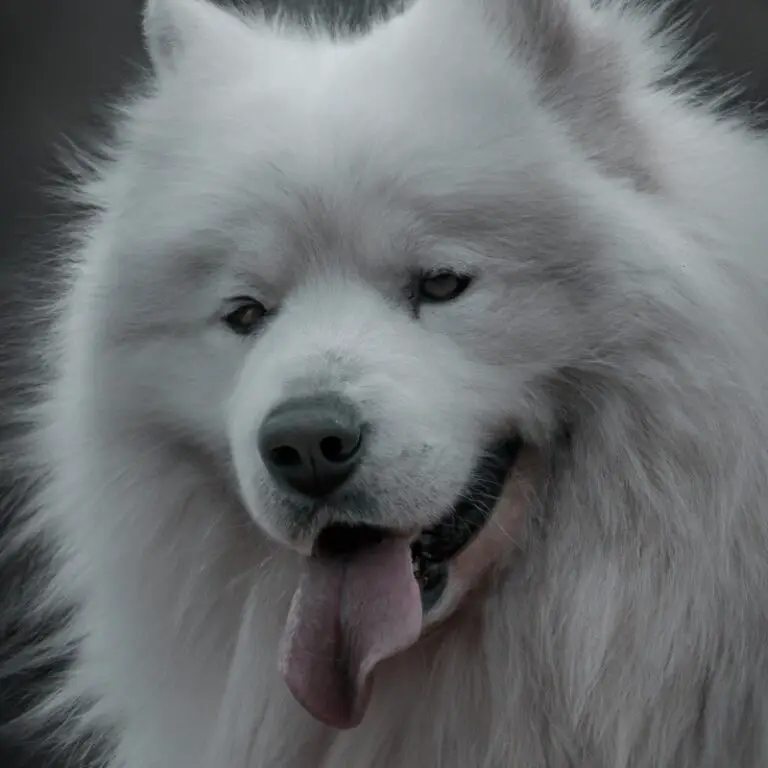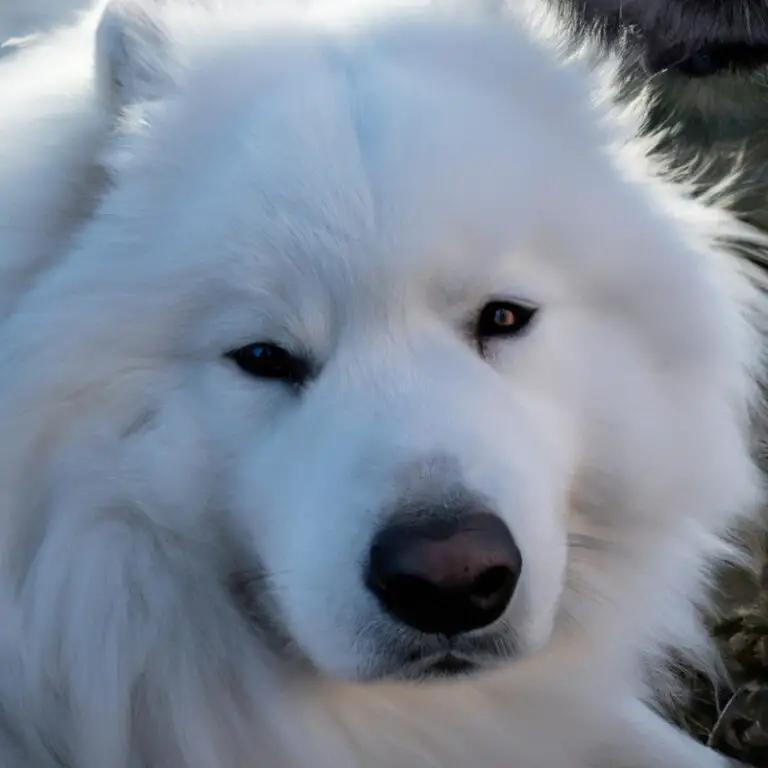Can Samoyeds Be Trained For Dock Diving?
Key Takeaways:
- You can train Samoyeds for dock diving with proper time, effort, and positive reinforcement.
- Samoyeds’ natural athleticism and love for water make them well-suited for dock diving activities.
- Consistency, patience, and gradual progression are key in training Samoyeds for successful dock diving.
- Starting training at a young age can allow Samoyeds to develop the necessary skills and confidence for dock diving.
Hey there! Are you wondering if Samoyeds, those fluffy and friendly dogs, can excel at dock diving?
Well, let me tell you, they sure can! As an expert in dog training, I can confidently say that Samoyeds possess the right characteristics to succeed in this thrilling sport.
In this article, I’ll dive into the world of Samoyeds and explore the training considerations, steps, tips, and safety measures to help you train your Samoyed for dock diving.
So, grab a cup of coffee, get comfortable, and let’s jump right in!
| Criteria | Yes | No |
| Physical Abilities | Samoyeds are strong swimmers and have a natural affinity for water. | Some Samoyeds may not enjoy jumping into water or have the necessary physical abilities. |
| Temperament | Samoyeds are eager to please and can be trained to perform various activities. | Not all Samoyeds may have the drive or inclination to participate in dock diving. |
| Training | With proper training and positive reinforcement, Samoyeds can learn dock diving skills. | Training may be challenging for some Samoyeds due to their independent nature. |
| Health Considerations | Samoyeds should be in good health and free from any conditions that could hinder their performance. | Samoyeds with certain health issues may not be suitable for dock diving. |
Characteristics of Samoyeds
Overview of Samoyed breed
Samoyeds are a breed of medium-sized dogs known for their friendly and gentle nature.
They have thick white fur, which makes them look incredibly fluffy and cuddly.
Samoyeds were originally bred to work alongside humans in freezing conditions, so they are hardy and have a high endurance level.
They are intelligent, but can also be stubborn at times.
Samoyeds make great family pets and are known for their love and loyalty towards their owners.
They require regular exercise and grooming to keep them happy and healthy.
Physical attributes of Samoyeds
Samoyeds are known for their striking physical attributes.
With their fluffy white coat, expressive dark eyes, and smiling face, they are undeniably adorable.
These dogs have a sturdy build and a strong, muscular body, making them well-suited for various activities.
One notable physical attribute of Samoyeds is their thick double coat, which helps them withstand cold temperatures.
It consists of a dense, insulating undercoat and a longer, coarser outer coat that protects them from harsh weather conditions.
This coat requires regular maintenance to prevent matting and keep it looking its best.
Another characteristic of Samoyeds is their erect, alert ears.
These ears not only enhance their adorable appearance but also contribute to their acute sense of hearing.
Samoyeds are known for being attentive and alert, and their ears play a role in helping them pick up on sounds in their environment.
Additionally, Samoyeds have a proud and graceful gait, which adds to their regal presence.
Their movements are smooth and effortless, reflecting their agile nature.
This physical attribute, combined with their strong muscles, makes them capable of participating in various activities, including dog sports like dock diving.
Training considerations for dock diving with Samoyeds
Temperament of Samoyeds and its impact on training
Samoyeds have a friendly and outgoing temperament, which can have a positive impact on their training. They are intelligent and eager to please, making them quick learners.
However, they can also be independent and stubborn at times, requiring consistent and patient training methods.
Positive reinforcement and rewards work well with Samoyeds, as they respond best to praise and treats. Socialization is also important to help them develop good behavior around other dogs and people.
Training sessions should be kept interesting and fun to keep them engaged.
With the right approach, Samoyeds can excel in training and become well-behaved companions.

Starting basic obedience training for Samoyeds
To start basic obedience training for Samoyeds, begin with the “sit” command.
Use a treat and hold it above their nose, then slowly raise it above their head.
As they follow the treat with their eyes, their bottom will naturally lower into a sitting position.
Praise and reward them once they sit.
Repeat this several times until they understand the command.
Use positive reinforcement techniques throughout the training process.
Remember to keep training sessions short and frequent for better results.
Practice consistency and patience to help your Samoyed succeed in obedience training.
Steps to train Samoyeds for dock diving
Getting started with water introduction
To get started with water introduction for your Samoyed, go slow and make it fun! Begin by introducing your dog to shallow water, like a kiddie pool or a calm lake. Let them explore and get comfortable on their own terms.
Use positive reinforcement, toys, and treats to create a positive association with water.
Gradually increase the depth and introduce them to new water environments. Always supervise your dog and ensure their safety during water play.
Building confidence in jumping off the dock
Building confidence in jumping off the dock is the key to success in dock diving with Samoyeds. To build their confidence, start by introducing them to the water gradually.
Use positive reinforcement and rewards to encourage them to approach and jump off the dock.
Practice in shallow water first before gradually increasing the depth. Take it at their own pace and never force them.
Remember to always make it a fun and enjoyable experience for your furry friend.
Teaching retrieval techniques for dock diving
To teach retrieval techniques for dock diving, start by selecting a toy that floats. Begin by getting your Samoyed excited about the toy, using praise and treats to reinforce their interest.
Gradually introduce water into the equation, starting with shallow pools and building up to deeper ones.
Encourage your dog to retrieve the toy by tossing it a short distance into the water and gradually increasing the distance. Positive reinforcement and patience are key in teaching your Samoyed these retrieval techniques.
Practice regularly to improve their skills and confidence in dock diving.

Training tips for Samoyeds specifically
Managing Samoyed’s thick coat during dock diving
During dock diving, managing a Samoyed’s thick coat is essential.
Here are some tips:
- Regular grooming: Keep their coat clean, detangled, and free from mats to prevent water retention.
- Trim the hair: Snip some of the excess hair to reduce drag and weight, allowing for better performance.
- Use a coat conditioner: Apply a specialized coat conditioner to help repel water and keep the coat buoyant.
- Invest in a life jacket: A well-fitted life jacket can help buoyancy and prevent their coat from weighing them down in the water.

Dealing with Samoyed’s strong independent streak during training
Training a Samoyed can be a challenge due to their strong independent streak. Here’s how you can deal with it:
- Be patient: Samoyeds are known for being stubborn, so remain calm and patient during training sessions.
- Use positive reinforcement: Reward your Samoyed with treats and praise when they follow commands correctly. This will motivate them to cooperate.
- Keep training sessions short: Samoyeds have a short attention span, so keep sessions brief to maintain their focus.
- Be consistent: Consistency is key in training any dog, so establish clear rules and boundaries and stick to them.
- Make training fun: Incorporate games and activities into your training sessions to keep your Samoyed engaged and interested.
- Seek professional help if needed: If you’re facing difficulties with training, consider enlisting the help of a professional dog trainer who has experience with independent breeds.
Remember, building a strong bond with your Samoyed through positive reinforcement and consistent training will help you overcome their independent nature.
Precautions and safety measures
Checking for any underlying health issues
Before training your Samoyed for dock diving, it’s important to check for any underlying health issues.
Start by scheduling a veterinary check-up to ensure your dog is in good physical condition.
The vet can assess any potential issues such as joint problems or heart conditions that may affect their ability to participate safely.
It’s also essential to observe your dog’s behavior and monitor for any signs of discomfort or pain during physical activities.
Regular exercise and a healthy diet can help maintain your Samoyed’s overall health and reduce the risk of injuries during dock diving.
Ensuring proper warm-up and cooldown routines
Proper warm-up and cooldown routines are essential when training your Samoyed for dock diving.
Before starting any intense activity, gradually warm up your dog’s muscles by going for a short walk or doing some light exercises.
This helps prevent injuries and prepares their body for the upcoming activity.
After the training session, make sure to cool down your Samoyed by gradually reducing their activity level.
Take them for a leisurely walk to help prevent muscle soreness and promote recovery.
Remember, warming up and cooling down are crucial for your Samoyed’s safety and well-being.
By incorporating these routines into their training, you can help keep them in good physical condition and minimize the risk of injuries.
Happy diving!
Frequently Asked Questions
Can all Samoyeds participate in dock diving?
Not all Samoyeds are natural dock divers.
While they are known for their athleticism, some Samoyeds may not have the drive or desire to participate in dock diving.
It ultimately depends on the individual dog’s temperament, physical abilities, and interest in water activities.
It is important to assess your Samoyed’s personality and physical condition before considering dock diving as a potential sport.
Consulting with a professional trainer or dock diving instructor can help determine if your Samoyed is a good candidate for this activity.
What age can a Samoyed start dock diving training?
A Samoyed can start dock diving training as early as 6 months old.
It’s important to ensure they have developed physically and mentally before beginning training.
Start with basic obedience training and gradually introduce them to the water and jumping off the dock.
Always prioritize their safety and monitor their comfort level in the water.
Gradually increase the height of the dock and the distance of the jumps as they gain confidence and skill.
Patience and positive reinforcement are key in training a Samoyed for dock diving.
How long does it take to train a Samoyed for dock diving?
Training a Samoyed for dock diving can vary in time depending on the individual dog.
On average, it may take several months to a year to properly train a Samoyed for this activity.
The length of time is influenced by factors such as the dog’s temperament, previous training experience, and consistency in training.
Patience, positive reinforcement, and consistency are key in the training process.
It’s important to work with a qualified trainer who specializes in dock diving to ensure proper technique and safety.
Final Verdict
Samoyeds can indeed be trained for dock diving with proper training and care.
Their friendly and energetic nature, along with their physical attributes, make them well-suited for this sport.
Starting with basic obedience training, introducing them to water, and gradually building their confidence in jumping off the dock are key steps in the training process.
Additionally, managing their thick coat and working with their independent streak are important considerations.
By taking precautions and ensuring safety measures, Samoyeds can successfully participate in dock diving.
With dedication and patience, Samoyeds can excel in this exciting sport and have a lot of fun in the process.







